Experiencing your car running hot at low speeds can be both puzzling and concerning. It’s a common issue that many drivers face, and understanding the root cause is crucial to getting back on the road safely. We’ve all been there, stuck in traffic, noticing the temperature gauge creeping up, and we know it’s a sign that shouldn’t be ignored.
Troubleshooting overheating issues requires a bit of know-how, but don’t worry, we’re here to guide you through it. From checking the coolant levels to inspecting the radiator, we’ll cover the essential steps to diagnose and fix the problem. Stay tuned as we dive into the world of automotive maintenance and ensure your vehicle stays cool, even when the going gets slow.
Understanding the Issue: Car Running Hot at Low Speeds
When we notice our car running hot at low speeds, it’s essential to understand that this could indicate a problem with the vehicle’s cooling system. Typically, a car’s engine generates more heat when it’s working harder. However, at low speeds, airflow through the radiator is reduced, which means the cooling system must work extra hard to keep the engine temperature in check.
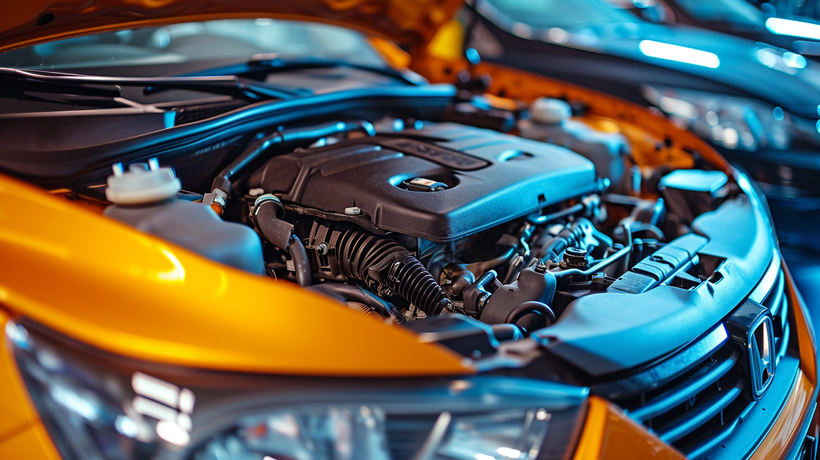
Let’s examine a few key reasons why our car might overheat at low speeds:
- Faulty Radiator Fan: The radiator fan draws cooler air through the car’s radiator when the car is moving slowly or idling. If the fan isn’t working correctly, the engine might overheat.
- Thermostat Issues: The thermostat regulates the engine‚Äôs temperature. If it sticks in the closed position, coolant can’t flow to the radiator, and thus, the engine heats up.
- Clogged Radiator: Over time, debris and sediment can build up in the radiator, inhibiting coolant flow and reducing its ability to dissipate heat.
- Coolant Problems: Low coolant levels or wrong coolant mixture can also cause overheating issues. It’s crucial to maintain the correct coolant levels and mixture according to the manufacturer’s specifications.
Here are some troubleshooting steps to help isolate the issue:
- Check the coolant level and top it off if necessary.
- Inspect the radiator and clean any blockages.
- Test the radiator fan for proper operation.
- Inspect the thermostat and replace it if it’s faulty.
- Look for any signs of leaks in the cooling system.
Routine maintenance can significantly reduce the chances of overheating. We should include checking our car’s coolant levels and inspecting its cooling system components as part of our regular vehicle maintenance schedule.
Ensuring that our car’s cooling system is free from leaks, blockages, or parts failure is vital for preventing issues that can lead to overheating, especially at low speeds where cooling efficiency is critical. Regular inspections and prompt attention to potential problems will keep our engine running cool and prolong the vehicle’s lifespan.
Importance of Troubleshooting Overheating Issues
When we’re behind the wheel, a vehicle running at optimal temperature is crucial for a smooth journey. Troubleshooting overheating issues doesn’t just resolve the immediate discomfort of a hot dashboard light; it’s about protecting the intricate maze of your car’s engine and systems beneath the hood. Overheating can spell disaster for an engine, leading to severe and costly damage if not addressed timely.
It’s essential to tackle these high-temperature troubles before they escalate. A car that tends to overheat at low speeds might be sending you early warning signs of larger problems. By taking proactive steps, we can safeguard against issues that could leave us stranded or with a hefty repair bill.
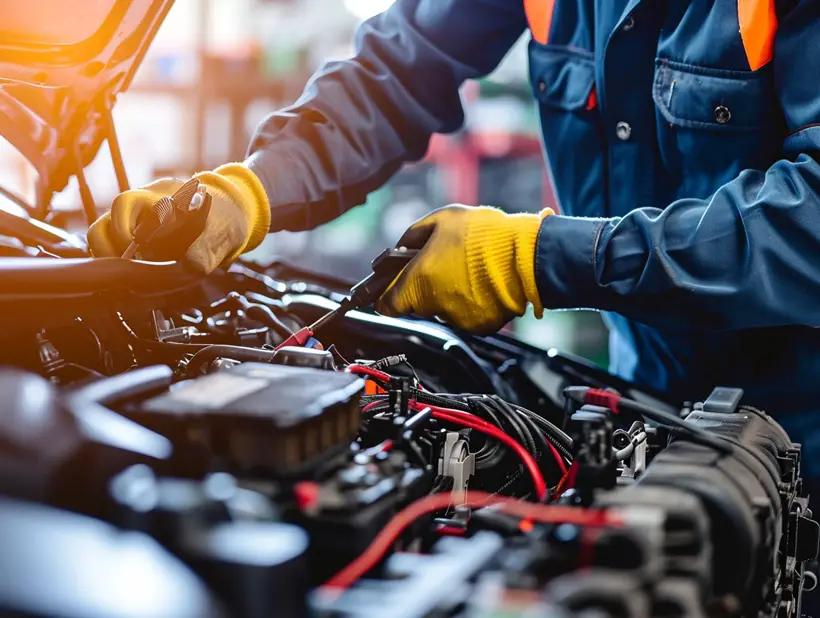
Potential Risks If Left Unresolved:
- Engine failure: Extreme temperatures can cause engine components to weld together.
- Increased wear and tear: Overheating places extra stress on the engine, reducing its lifespan.
- Safety hazards: An overheated engine can lead to a breakdown in unsafe locations, posing risks to occupants.
When approaching an overheating issue, we look at a variety of potential culprits:
- A stuck thermostat: It can impede coolant flow, causing the temperature to rise.
- Low coolant levels: Insufficient coolant prevents adequate heat dissipation.
- A malfunctioning radiator fan: Without it, there’s no airflow to cool the radiator at low speeds.
By systematically examining each of these areas, we identify the root of the problem. This hands-on investigation is more than just a quick fix; it’s a thorough approach to maintain the integrity and performance of our vehicles over the long term.
Routine maintenance is always our best defense against overheating. Scheduled checkups of the coolant levels, fan operation, and thermostat condition are a small investment in our car’s health and our peace of mind. Remember, spotting the early signs and responding effectively can be the difference between a simple repair and a complicated one.
Step 1: Checking Coolant Levels
When we tackle overheating problems, the first step we take is to check the coolant levels. Coolant, also known as antifreeze, is essential for absorbing heat from the engine and dissipating it through the radiator. Insufficient coolant can lead to overheating, particularly at low speeds when less air flows through the radiator.
To check the coolant levels:
- Ensure the engine is cool before opening the radiator cap to prevent burns from hot fluid or steam.
- Locate the radiator and the coolant reservoir. These are typically found near the front of the engine compartment.
- Inspect the level of coolant in the reservoir, making sure it’s between the “Low” and “Full” markers.
- If coolant levels are low, add the appropriate type of coolant until it reaches the correct level. Be sure to use the same type that’s already in the system.

Additionally, we look for signs of coolant leaks which might include:
- Puddles of coolant under the car
- A sweet-smelling liquid
- Low coolant levels without any reasonable explanation
To ensure we’re thorough, we also inspect the condition of the coolant. If the antifreeze is discolored or contains debris, it might be time for a coolant flush. Over time, coolant can degrade and lose its effectiveness, leading to overheating.
Remember, maintaining proper coolant levels and condition is vital for the engine’s health. Regularly checking and topping off the coolant can prevent the majority of overheating issues, safeguarding us against costly repairs and ensuring our safety on the road.
Step 2: Inspecting the Radiator
After addressing the coolant levels, we turn our attention to the radiator‚Äîan essential component in the vehicle’s cooling system. A malfunctioning radiator often contributes to a car running hot at low speeds. By understanding how to evaluate the radiator, we can isolate another potential source of overheating.
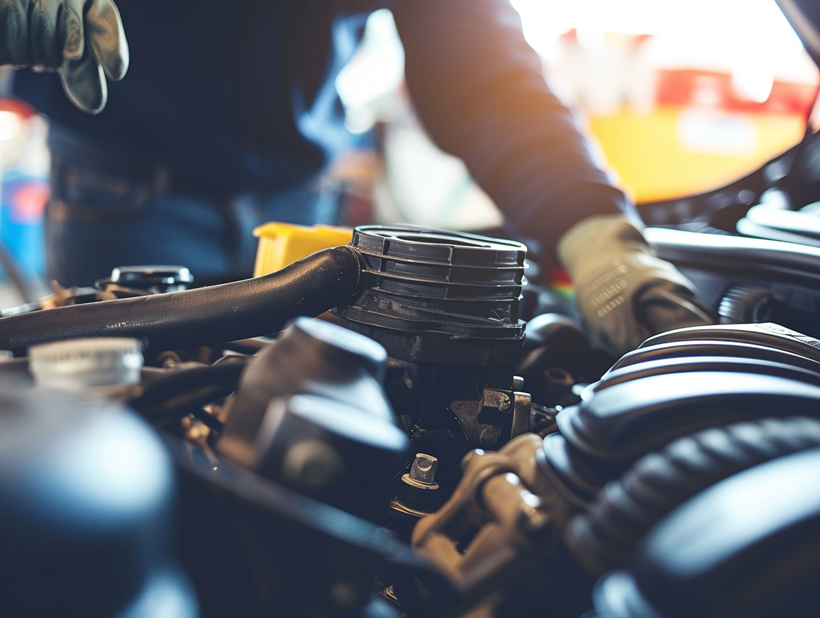
To inspect the radiator, first, make sure the engine is cool. Then, carry out the following steps:
- Check for visible damage: Look for any signs of cracks or leaks in the radiator itself and its hoses.
- Inspect the radiator cap: A worn cap can cause the cooling system to lose pressure, leading to overheating.
- Examine the fins: Ensure the radiator fins are not bent or obstructed by debris, as this can impede airflow.
If blockages in airflow or circulation are present, they will restrict the radiator’s capability to dissipate heat effectively. While assessing the radiator, observe the following indicators:
- Accumulation of rust and sediment: These can cause blockages, impacting the radiator’s performance.
- Hoses condition: Over time, radiator hoses can harden and split, creating leaks and a loss of coolant circulation.
- Radiator fan operation: A non-functional fan can create issues especially at low speeds, when natural airflow is limited.
Our assessment might reveal that it’s necessary to clean or repair the radiator‚Äîor possibly replace a faulty fan. Regular checks on the radiator’s condition help prevent unexpected failures. While working through these steps, it’s vital to handle components with care, as the system is often under pressure and contains hot fluids when operational.
Here’s a breakdown of common radiator issues and their possible impact:
| Radiator Issue | Possible Impact |
|---|---|
| Damaged fins | Reduced heat dissipation |
| Faulty radiator cap | Decreased system pressure |
| Sediment buildup | Impeded coolant flow |
| Leaking hoses | Lower coolant levels, overheating |
| Inoperative fan | Overheating at low speeds |
By systematically approaching each potential problem area, we enhance our ability to keep our car running optimally and mitigate the risks of significant engine damage from overheating.
Step 3: Examining the Water Pump
When addressing a car that runs hot at low speeds, we can’t overlook the water pump’s critical role. The water pump circulates coolant throughout the engine and to the radiator, maintaining optimal operating temperatures. A malfunctioning water pump can severely impact the cooling system.
To assess the water pump’s condition, we first listen for a high-pitched whining sound from the front of the engine – a tell-tale sign that the water pump bearings might be failing. Another indication could be coolant leakage from the water pump weep hole, a clear hint that the pump’s seal is compromised.
Here are additional signs that we keep an eye out for when inspecting the water pump:
- Coolant Residue: Traces of dried coolant can often be found near the pump.
- Pulley Play: Excessive play in the water pump pulley may indicate a worn bearing.
- Overheating: If the car overheats shortly after starting, it could signal a water pump issue.
For a more conclusive assessment, a thorough visual inspection is warranted. During this check, we make sure to inspect the pump impeller blades for corrosion or breakage, which could impede coolant flow.
Lastly, we may perform a coolant system pressure test. This test can help verify the integrity of the water pump and identify leaks that aren’t evident during a simple visual inspection.
By carefully examining the water pump, we take yet another step in ensuring the longevity and performance of the vehicle’s cooling system. Identifying and rectifying water pump issues early on aids in preventing further damage and keeps our cars running cool, even at low speeds.
Step 4: Testing the Thermostat
When a car runs hot at low speeds, the thermostat could be the culprit. It’s designed to regulate engine temperature, but if it fails, it can cause overheating. We’re going to cover how to check if the thermostat is working correctly.
First, make sure the engine is cool to the touch. Performing any tests on a hot engine can be dangerous. With safety in mind, let’s proceed.
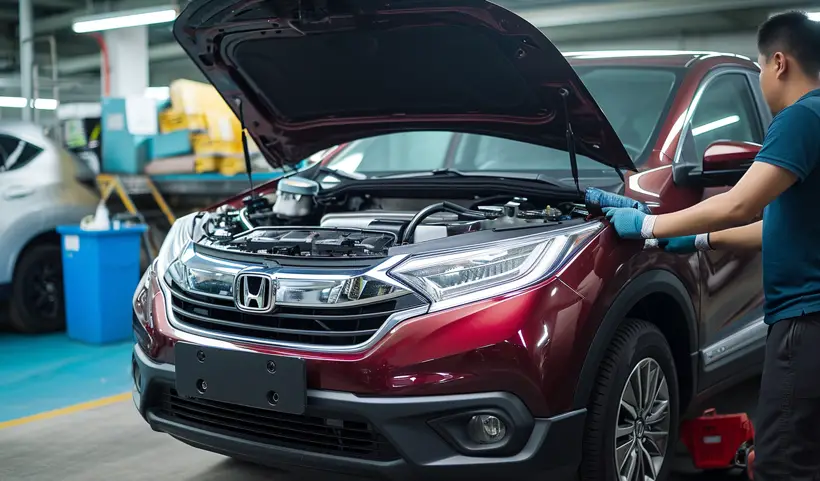
Remove the radiator cap carefully and then locate the thermostat. It’s generally found at the engine end of the upper radiator hose on most vehicles. If you’re unsure where it‚Äôs located in your car, refer to the owner’s manual for guidance.
- Start the Engine: With the radiator cap off, start the engine. Observe the coolant flow within the radiator. Initially, there should be minimal to no flow.
- Monitor the Temperature Gauge: Watch the gauge until it reaches operating temperature. At this point, the thermostat should open, and you’ll see a noticeable increase in coolant flow.
- Check for Flow Changes: If there’s significant flow before the engine warms up, the thermostat might be stuck open. No change in flow even after the engine reaches operating temperature suggests it’s stuck closed.
If you suspect the thermostat is malfunctioning, it’s best to replace it. Here’s how to test it directly:
- Remove the thermostat from the vehicle.
- Place it in a pot of water and slowly heat the water.
- Keep an eye on the thermostat to see if it opens as the water heats up.
Refer to your vehicle’s service manual for the thermostat’s opening temperature. Use a suitable thermometer to monitor the water temperature and ensure it aligns with the thermostat specifications. If the thermostat does not open at the correct temperature, it’s time for a replacement.
Following these steps will help you pinpoint a faulty thermostat and get you closer to resolving your car’s overheating issue at low speeds. It’s an essential component in your vehicle’s cooling system and should be functioning properly to keep your engine at an ideal operating temperature.
Step 5: Flushing the Cooling System
Once we’ve ruled out the thermostat and checked the water pump, it’s time to turn our attention to the cooling system itself. Over time, the cooling system can accumulate rust, dirt, and debris, which might impede coolant flow and cause our car to run hot at low speeds.
Flushing the cooling system is an excellent way of clearing out these contaminants and should be part of our regular maintenance schedule. Here’s how to go about it:
- Ensure the Engine is Cool: Never attempt to flush the cooling system when the engine is hot to avoid burns and other injuries.
- Drain the Coolant: Locate the radiator drain plug, usually found at the bottom of the radiator. Place a container underneath to catch the old coolant and open the plug, allowing the system to empty.
- Clean the Radiator: Once the old coolant has been drained, use a garden hose to flush water through the radiator. Continue this process until the water runs clear.
- Refill the System: After flushing, replace the drain plug and fill the radiator with a mixture of fresh coolant and water. Check the owner’s manual to ensure the correct ratio of coolant to water for our specific vehicle model.
- Bleed the System: To remove any trapped air, run the engine with the radiator cap off, allowing it to reach operating temperature. Watch for air bubbles escaping from the radiator and refill with coolant as needed.
It’s also important for us to dispose of the old coolant properly, as it’s a toxic substance. Many auto parts stores and service centers offer coolant recycling services.
Here’s a quick rundown of the signs showing when it’s time to flush our cooling system:
| Indicator | Description |
|---|---|
| Overheating Engine | Persistent overheating, especially at low speeds |
| Discolored Coolant | Coolant appears rusty, murky, or contains particles |
| Coolant Leak | Puddles of coolant under the car |
| Poor Heater Performance | Heater not providing enough warmth |
Regular maintenance, such as a cooling system flush, is essential in preventing our car from running hot, especially at low speeds. With a clean cooling system, we’re helping to ensure the longevity and efficiency of our vehicle’s engine.
Step 6: Investigating the Cooling Fan
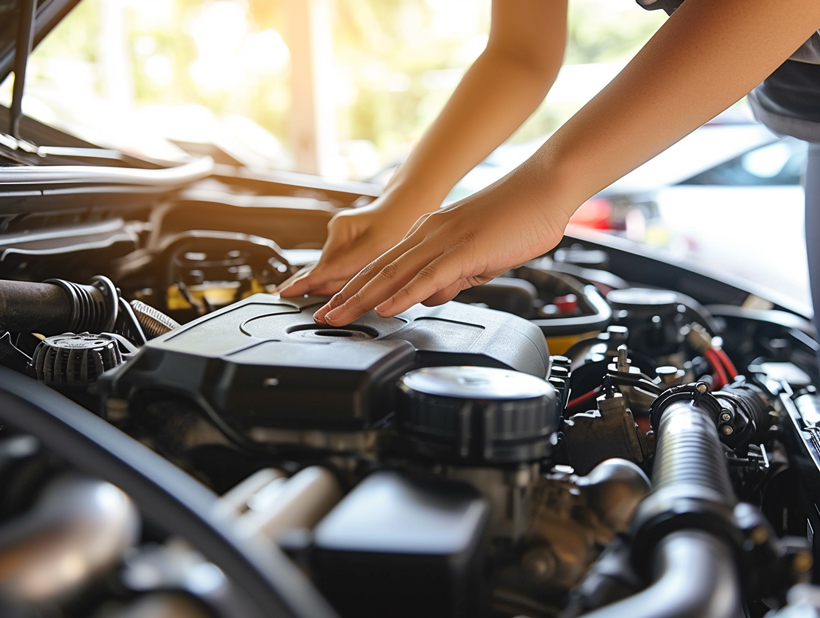
When our car runs hot at low speeds, it may signal an issue with the cooling fan, a key component that helps regulate the engine’s temperature. Armed with a few tools and some patience, we can inspect the cooling fan ourselves.
Here’s what we need to check:
- Fan Operation: Is the fan kicking in when the engine reaches operating temperature? We should see or hear it activate. If not, it could be an electrical issue or a malfunctioning fan motor.
- Fan Blades: We’ll visually inspect the blades for cracks or damage, which can significantly reduce the fan’s efficiency.
- Wiring and Connectors: Loose or corroded connections can disrupt the fan’s power source, leading to overheating. We’ll make sure all connections are secure and clean.
- Fan Clutch: If our car has a mechanically driven fan, we’ll check the fan clutch. A slipping clutch can’t transmit enough power to the fan, causing poor performance.
Sometimes the fan relay or temperature sensor may be the culprit. If we’re not comfortable diagnosing these electrical components, it’s a good time to seek help from a professional mechanic.
If we’ve established that the fan itself is operational, but we’re still facing overheating at low speeds, it might be time to delve deeper into the cooling system. Issues like clogged radiator fins or a failing radiator cap can also contribute to the problem.
By taking a systematic approach, we’re armed with a better understanding of what might be causing our car’s overheating problems. Regular maintenance and immediate attention to any cooling system irregularities can keep our car running smoothly, minimizing the risk of overheating and the costly damages it can lead to.
Next Steps:
- Inspect radiator fins for blockage
- Check radiator cap for proper seal and pressure rating
- Schedule a professional inspection if necessary
By understanding and keeping a close eye on all these components, we’re ensuring the well-being of our car. A cool engine means a happy journey, and that’s what we’re aiming for.
Step 7: Considering Other Possible Causes
After we’ve addressed the most common issues that cause a car to run hot at low speeds, it’s important to recognize there could be more subtle culprits at play. Let’s explore additional factors that may be overheating our engine.
- Obstructed Airflow: If our car’s front grille or air intakes are obstructed by debris or damage, this can significantly hinder airflow, affecting the radiator’s ability to cool the engine.
- Faulty Radiator Pressure Cap: The radiator cap maintains the correct pressure within the cooling system. A failing cap can lead to decreased cooling efficiency and may contribute to overheating.
- Engine Timing: Incorrect engine timing can generate excessive heat. If we haven’t had our engine timing checked recently, it might be time to do so.
- Exhaust Blockage: A blockage in the exhaust system can back up heat into the engine compartment. This is less common but worth investigating if we’ve ruled out other causes.
- Blown Head Gasket: A blown head gasket can allow coolant to leak either internally or externally. We might notice white smoke from the exhaust or oil contamination.
- Wrong Coolant Mixture: Too much water or an incorrect coolant type can impair the system’s ability to cool. Always stick to the manufacturer’s recommended mixture ratio.
Checking these potential problems can help us pinpoint why our car continues to overheat. It’s crucial to keep our vehicle in peak condition to avoid the risk of engine damage due to overheating. Regular inspections and upkeep are our best defense against these issues.
Diagnosing car problems can be complex, and it’s vital not to jump to conclusions without a thorough check. If we’re not confident in our abilities to diagnose and repair, it’s advised to seek the help of a certified mechanic. They have the expertise and equipment to accurately identify and fix the problem, ensuring our car runs smoothly and reliably. Remember, proper maintenance is key to extending the life of our car and keeping us safe on the road.
Conclusion
We’ve armed you with the knowledge to tackle overheating issues when your car runs hot at low speeds. Remember, regular maintenance is key to preventing costly damage. Don’t hesitate to seek professional help when needed and always pay attention to your car’s cooling system irregularities. By staying vigilant and addressing problems promptly, we can ensure our vehicles stay cool under pressure and run smoothly for years to come. Keep these tips in hand for a confident, cool drive every time.
